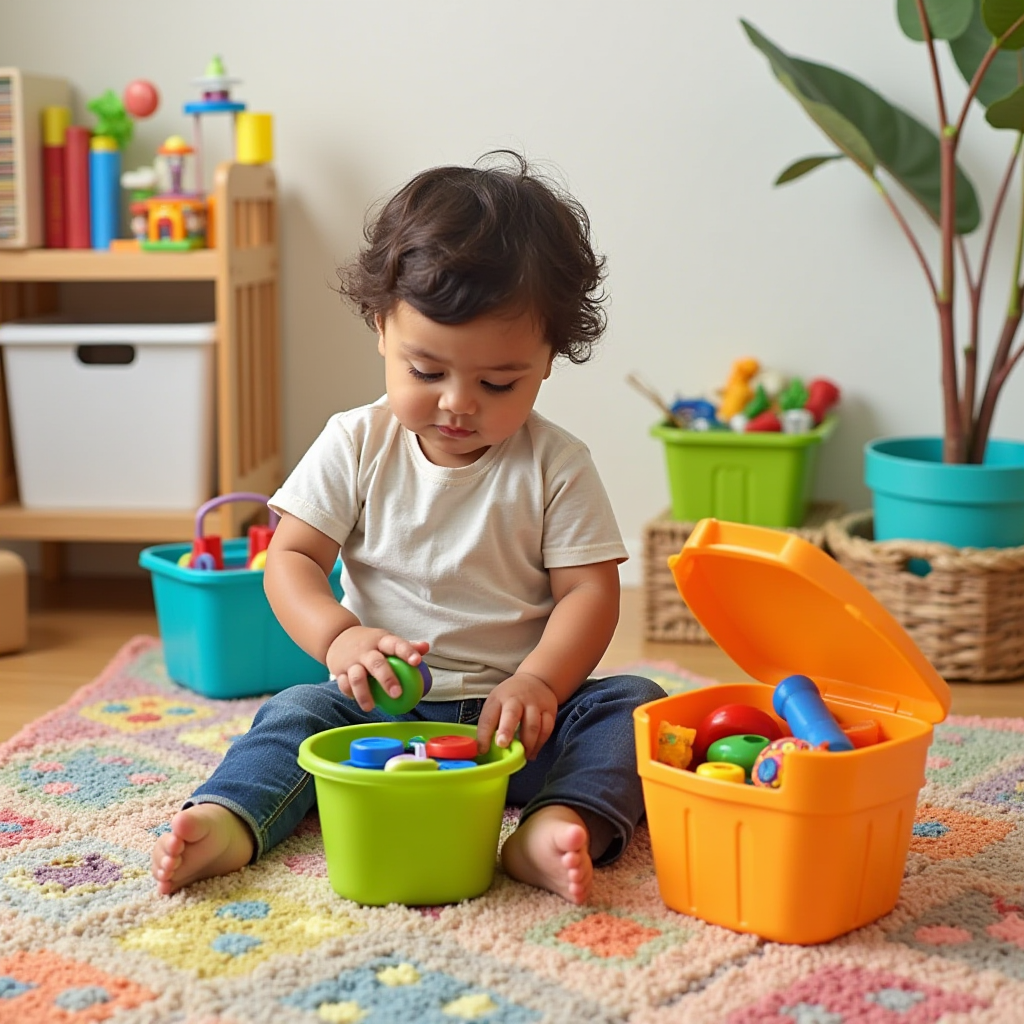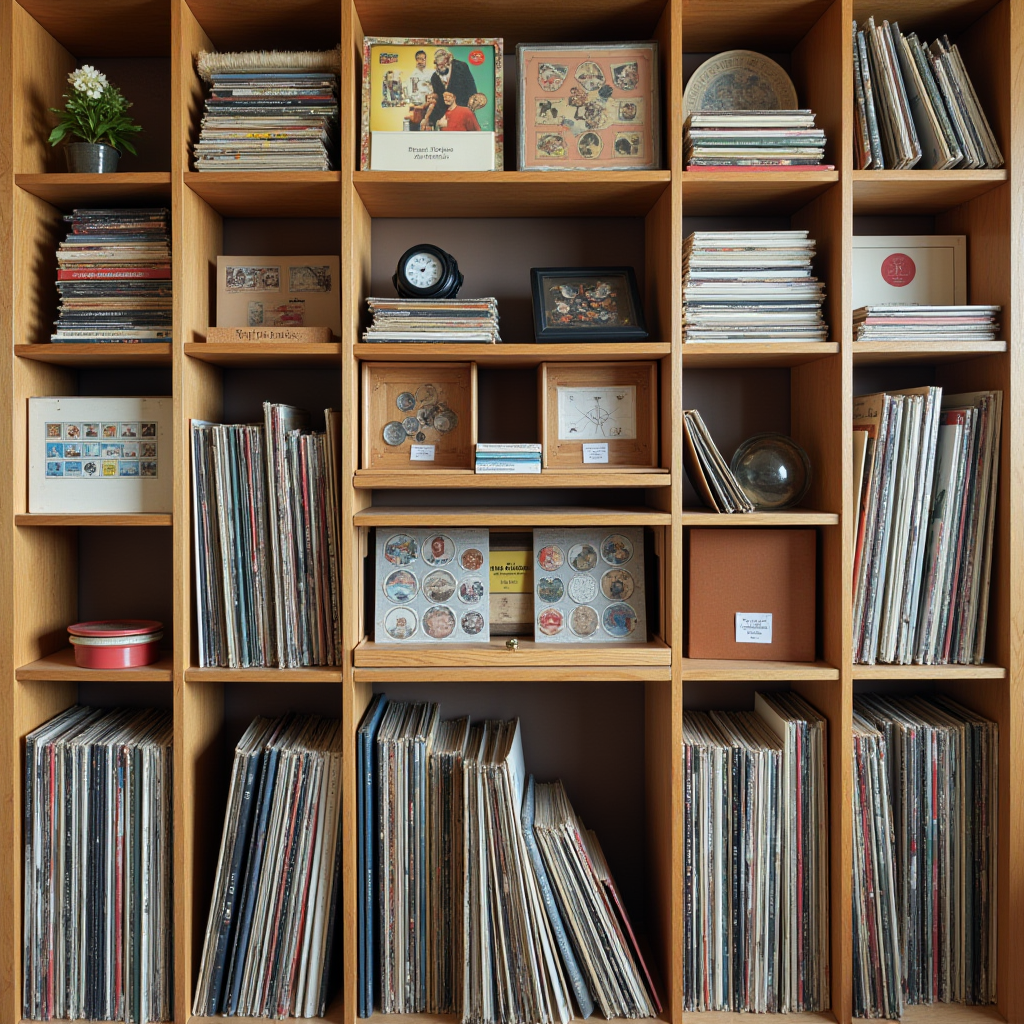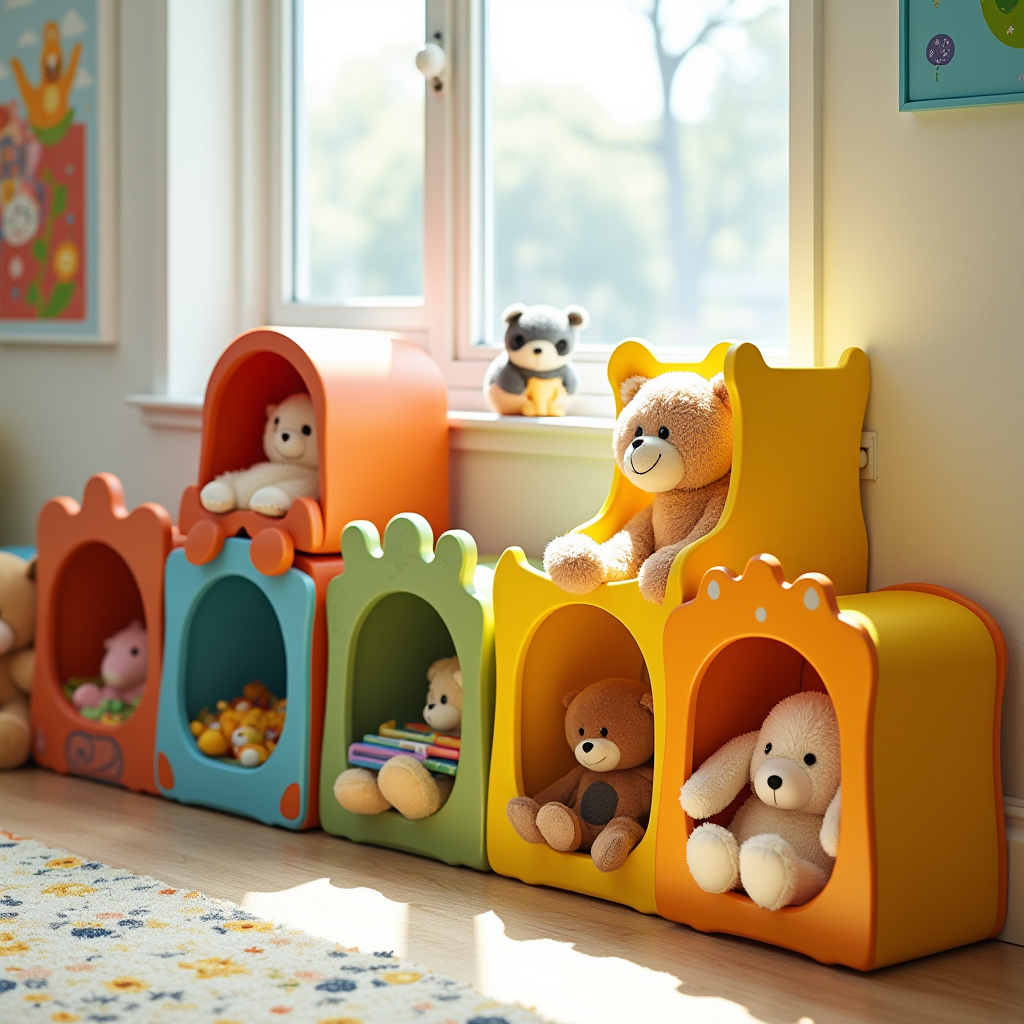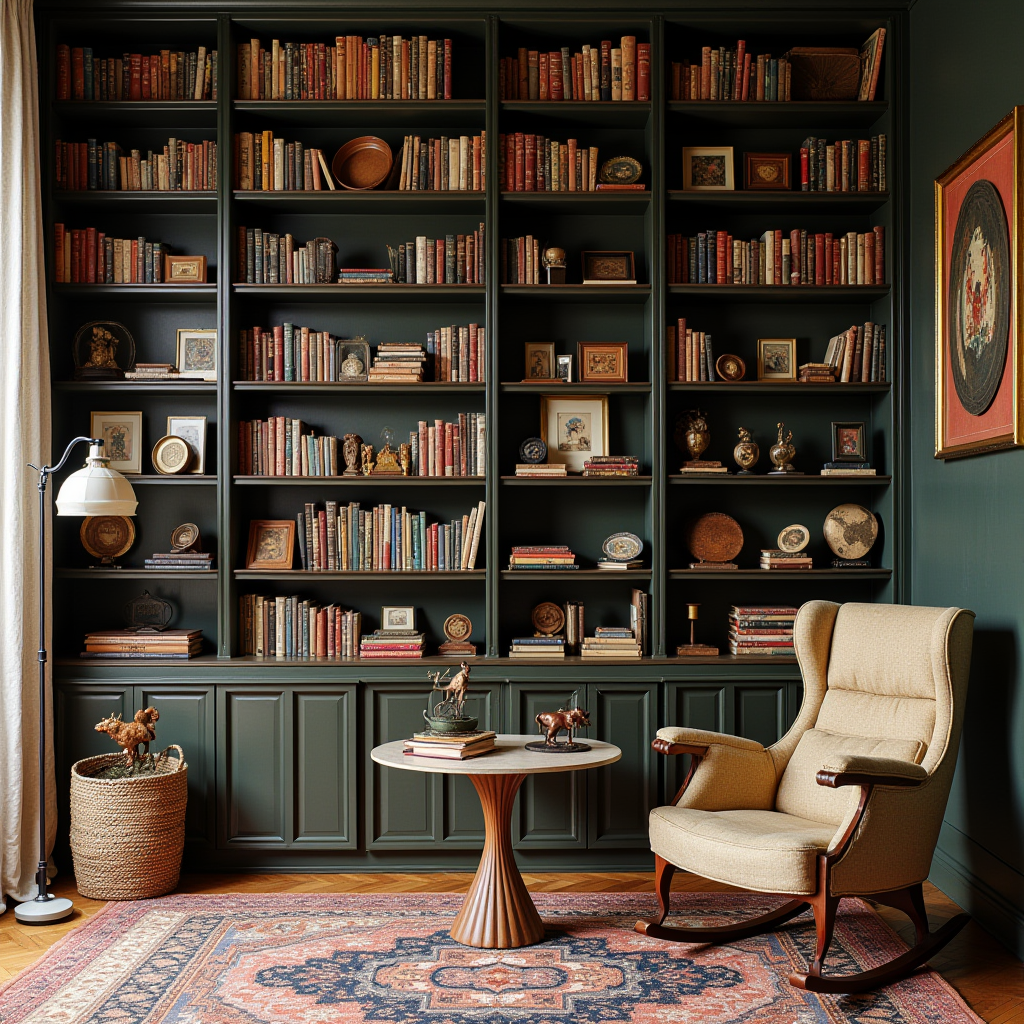Introduction
Any parent or guardian knows that, when it comes to organizing a communal space, different age groups have unique storage needs. For children, items and toys need to be kept at reachable levels where fun and ease of access are paramount. Simultaneously, adults require storage methods that are categorical, practical and often, suitable for displaying collectibles. The problem thus arises – how can you balances these widely different needs in a single space without resulting chaos and clutter? Further complications arise when you also consider safety measures, a vital aspect that cannot be discounted or ignored as it may lead to devastating consequences such as accidents or losing valuable belongings.
But fear not, a solution is at hand. This comprehensive guide on age-appropriate storage solutions and safety measures – ‘Kids Vs. Adults’, caters to these specific challenges. We delve deep into sound strategies and practical tips that not only provide easy access for kids and showcase-worthy displays for adults, but also ensure a safe environment. This guide is relevant for all those who strive to maintain harmony while juggling the divergent storage needs of kids and adults in shared spaces.
Understanding Children’s Storage Needs
Understanding the difference between a child’s storage needs and an adult collector’s desires is crucial because both require unique approaches. Children need storage that is accessible, attractive, and fun, while collectors might look for categorized, display-worthy options. Safety considerations are also vital, and shared space compromises are often required.
Storage Solutions for Children:
Children, especially those under five years old, can make a room cluttered in seconds. Their toys, books, and other play items need to be stored in a way that allows them to easily access and put them away. Brightly colored boxes, open shelves at a reachable height, and furniture with integrated storage like beds and seats, are typically advisable for children.
For instance, when my children were little, I repurposed an old bookshelf and brought it down to toddler height. This enabled them to choose their own books and sparked their interest in reading from a young age.
It’s interesting to note that according to a study by IKEA, organized and appealing storage solutions can increase a child’s engagement with their toys and encourage self-led play.
Safety Considerations:
When planning storage for children, safety can never be overly emphasized. Avoid storage units with sharp edges or made from materials that can easily break, like glass. It’s also important to anchor heavy furniture to the wall to prevent tipping accidents – according to the Consumer Product Safety Commission, a child is sent to the emergency room every 43 minutes due to furniture tip-overs in the United States.
Storage for Adult Collectors:
Adult collectors have different needs. They often want to display their collections, so clear cases or shelves with specific category sections would be ideal. Options include glass-door cabinets, mounted wall shelves, or shadow boxes. These solutions allow the collections to be displayed and appreciated while keeping them safe from dust and potential damage.
As a Funko Pop collector, I found the difficulty in keeping my collection sorted. I got a shelving unit with clear glass doors, which not only allowed me to enjoy the display but also kept them clean and free from dust.
Shared-Space Compromises:
In shared spaces, it can get a bit tricky to blend children’s storage with adult collector’s displays. Solutions include dedicating separate zones or using multi-purpose storage. I once used an ottoman that served as a toy box for my children and also as a display table for my miniature car collection. Innovative compromises like these can bring harmony into shared spaces.
In conclusion, understanding these different storage needs can help create a space that functions well for everyone using it.

How Adults Collect: Unique Storage Requirements
Adult collectors, in contrast to young children, often have unique storage requirements that reflect their careful collection, appreciation, and display needs. Whereas children prioritize easy access and fun in their storage solutions, adults tend to be more selective, focusing on categorized and display-worthy storage systems.
Unique Adult Collectibles Storage
Adult collectors typically prefer storage options that cater to the unique requirements of their possessions. For instance, classic car collectors often require larger space, specific climate settings, and safe lock systems. Similarly, Stamp or coin collectors would prefer tailored storage methods such as albums or display cases that protect, present and organise their valuables effectively.
Sensitivity to Storage Environment
The environment in which adult collectibles are stored is also significant. Conditions such as humidity, light exposure, and temperature have the potential to degrade the quality of your collectibles over time. Even small fluctuations in these conditions can cause considerable damage. For instance, a survey conducted by American Institute of Physics highlights that a mere 5% alteration in humidity levels can lead to a 25% change in material degradation rates.
Safety Considerations
One of the lessons I’ve learned from my personal journey as a collector is that safety and security are critical. In addition to the necessity of protecting your collection from theft, precautions should also be taken against accidental damage. For instance, use wall-mountable display cases instead of freestanding ones to avoid accidental knock-overs.
Shared-Space Compromises
Storage can often become a subject of conflict in shared spaces. I learned this the hard way when I brought home my first large piece of memorabilia. Today, I recognize the importance of communication and mutual respect in deciding how shared spaces are utilized. A shared collection display can also establish a beautiful compromise, combining the interests of multiple household members in a single display unit.
Incremental Cost
Another insight is the often underestimated cost of proper storage. A Collectibles Insurance Services study found that collectors often underestimate the space and cost required to store their items. Hence, it is necessary to properly budget for comprehensive storage solutions which include not just the physical space, but also the cost of maintaining the storage environment.
Making Storage Fun
Finally, while adult collectors’ storage needs tend to be more complex, incorporating elements of fun can offer a unique twist. Just as children’s storage solutions are made fun to engage their interest, adult collectors can also infuse their love for the collection into the storage design. Be it superhero-themed storage boxes or vintage-styled shelves, the options are endless.
The journey to perfectly storing a collection is a continuous learning experience. But with a balance of safety, practicality, and fun, curated storage can enhance not just the life of your collectibles, but also your passion for collecting.

Keeping It Safe: Proper Measures for All Ages
Safety is paramount to everybody, but its meaning varies a lot between adults and children. Here, we unravel some useful comparisons and tips for toy storage in various contexts:
Child-Friendly Storage Solutions
An estimated annual 12,000 children (under the age of 15) end up in hospitals due to toy-related injuries. For very young children, safety means easy and injury-free access. Cabinets without doors, or with sliding doors, open bins, and toy chests without a lid are some solutions. Avoid any storage option with sharp corners or hard materials to minimize harm during play.
Manufacturers create fun and colourful products to make storage look appealing. For example, there are playful toy chests shaped like animals or cars. A personal favourite was a giant lego-shaped box that doubled as a giant lego for my kids. This multi-purpose approach can be appealing to kids while serving a functional purpose.
Adult Collectors’ Storage Ideas
An adult collector’s safety concern is ensuring that collectables are free from damage, dust, and fading. Clear protective casing, like Funko Pop Vinyl Figure Cases, with UV protection can preserve them in pristine condition.
For displaying purposes, wall-mounted glass cabinets or open floating shelves can layout collections impressively. I once saw a friend’s collection of countless baseball cards neatly sorted by teams and neatly organized in a display-worthy storage unit. It added a unique touch to his room.
Shared Space Considerations
Combining child and adult spaces can be a tight squeeze. Always prioritize children’s safety but be mindful of the collector’s needs. Here are some common compromises:
- Selecting furniture wisely: Opt for storage units that feature both, enclosed space (for adult collectables) and open bins (for kids toys).
- Height is key: Display valuable collectables on higher shelves, out of reach of children.
- Education: Teaching children the importance of respecting other’s property may help avoid mishap.
One lesson learned here is that space-sharing involves mutual understanding, respect, and compromise. Complex as it might sound, it helps in fostering compassion and empathy in children.
Remember, safety in storage is more than injury prevention. It’s about creating spaces that respect all inhabitants and their varied needs. In the end, the best storage solutions always come from considering the users, their needs, and their safety.

Fun and Functionality: Storage Solutions for Kids
Choosing the Perfect Storage Solution: Kid’s vs. Adult Collectors
A well-organized space can be more than just a functional requirement; it can serve as an exciting opportunity to introduce fun, creativity, and learning into the mix, especially when designing for kids. On the other hand, adult collectors may require a more complex system tailored for categorization and display. Here are some interesting insights to consider when comparing these two.
Kid’s Storage Solutions: Fun and Accessibility
For a kid’s room, practical, accessible, and fun storage options such as colorful bins or themed toy chests can be ideal. According to a study published in the Journal of Environmental Psychology, children function better in organized environments. So, incorporating storage solutions that encourage them to clean up, organize their toys or books can significantly enhance their cognitive development.
- Stackable Crates: Easy to assemble and takedown, children can also get creative rearranging them frequently. Plus, they are an affordable solution and can be found on Ikea, for example.
- Monogrammed Storage Baskets: Not only do they look adorable, they can also help children learn letter recognition.
- Open Shelving: Low-height, open shelves make it easy for kids to access and return their items. Also, it enables you to teach categorization at an early stage.
Lessons Learned: Safety Considerations
Once, while trying to reach a high shelf, my son toppled over a storage cabinet. Luckily, he wasn’t hurt, but it was a wake-up call. When designing storage solutions for children, always anchor heavy furniture to the wall, and ensure corners are rounded to prevent injuries.
Adult Collectors’ Storage Solutions: Categorical and Display-worthy
On the other hand, adult collectors require a system that not only stores but also displays their collection efficiently. Each collector’s needs are unique depending on what they’re collecting. Yet, utilzing a categorization system and special display storage are common requirements.
Using sectional trays for smaller collections like stamps or coins, and investing in glass-front display cabinets for larger items like action figures or vases, are couple of ways adult collectors can store their treasures. Websites like The Collectors Dream offer a myriad of specialized storage solutions.
Insightful Compromise: Shared Spaces
In shared spaces, matching the aesthetics of kid’s storage solutions to the adult’s can create a harmonious environment. For instance, opt for a uniform color scheme for the storage boxes or use similarly styled but different sized shelves. Adopting modular storage systems can also allow each person to customize their part of the room.
Conclusion
Whether you’re designing a storage solution for a playful child or a serious adult collector, customizing it to their needs not only keeps the space tidy but also enhances functionality and satisfaction. With a bit of research and creativity, the perfect storage solution is just around the corner.
Remember, organization is not about perfection. It’s about reducing stress, finding things quickly, and even learning in the process. Use these insights in your organization journey.

Creating Collections: Storage for Adult Collectors
Storing collectibles is not just about keeping your treasures safe; it’s about organizing, displaying and protecting your prized possessions in a way that suits your needs and makes sense for their value. In this guide, we’ll explore the differences between child-centric and adult-centric collecting habits and provide practical storage tips for adult collectors.
Children’s Collecting VS Adult Collecting
Children often build collections around whimsical interests or on-the-spot decisions – for instance, seashells from their summer holiday or superhero action figures. On the other hand, adult collectors often have more defined categories, such as vinyl records, first-edition books or vintage wine. They tend to collect items of potential value or long-standing personal significance.
Children’s collections focus on easy access and fun, often stored in colorful boxes, shelves reachable by little hands, or simply strewn across the floor in play. Adult collectors, in contrast, look to categorically organize and create display-worthy collection areas which are often hands-off. This can lead to conflicts in shared spaces, requiring thoughtful compromises.
Practical Storage Tips
1. Organization is key. Bins, drawers and clearly labelled boxes can house large collections. Professional organizer and author of the popular book “The Life-Changing Magic of Tidying Up”, Marie Kondo suggests storing items vertically for easy visibility and space conservation.
2. Protect from physical damage. Depending on the collectible, consider archival quality document protectors, acid-free boxes, or UV-protective cases to ensure longevity. In my personal experience as an avid comic book collector, I sadly learned the importance of this after noticing early Batman issues yellowing over time.
3. Consider temperature and humidity. A Smithsonian Museum Conservation Institute study showed that environmental factors are the primary cause of damage to collectibles. A climate-controlled space away from direct sunlight is ideal.
4. Display with pride, but also prudence. Glass-fronted cabinets, display cases or mounted shelves give an aesthetic appeal to your collection while offering protection. But always remember safety – avoid overcrowded shelves and locations within reach of children or pets.
Shared-Space Compromises
Navigating shared spaces can be tricky. My wife, for instance, has her own collectibles, and our preferences clash at times. Setting boundaries for collection spaces can be helpful, with specific shelves or rooms dedicated to individual collections. Swap out displays periodically so different collections enjoy the spotlight.
Collecting as an adult requires an additional layer of thought and organization to ensure that your treasured items can be enjoyed and remain in good condition.This approach not only showcases your collection in its best light; it can also increase its potential value over time, and most of all ensure that you, and others, can enjoy this glimpse into your world for many years to come.

Harmony in Shared Spaces: Compromise without Sacrificing Functionality
Creating shared spaces that cater to both young children and adult collectors can be both challenging and rewarding. Striking a balance that accommodates the needs of everyone without sacrificing functionality is key. With a bit of creativity, ingenuity, and compromise, harmony can be achieved in shared spaces.
Creating Child-Friendly Spaces
Most kids are innately curious and imaginative. They want their toys and books within arm’s reach. Easy access storage methods, such as open bins and shelving, are particularly effective. These solutions encourage independence and uphold the truism ‘out of sight, out of mind,’ thereby potentially increasing the likelihood of play.
For example, when I was redesigning the room, I sourced sturdy, low-level shelves. This allowed my children to safely pick and return their toys at their own discretion. In the process of teaching them orderliness, my own need for neatness was tested. I learned to accept that each neatly arranged play area would inevitably face the creative tempest of a child. And in this balance, we found our harmony.
Considerations for Adult Collectors
Collectors, on the other hand, require different storage and display methods. The purpose is usually dual: safe keeping and visually pleasing displays. For my baseball card collection, a categorical, display-worthy setup was crucial. I opted for mounted glass-fronted cabinets as they offered storage protection and allowed a clear view of the collection.
But compromise becomes significant in shared spaces. My mounted cabinets, initially placed at a low level, had to be set higher to prevent curious kid-fingers from adventuring. Yet, updating my display to a higher setup not only improved its visual aesthetic but inadvertently kept my collection safer.
Safety First
When curating a shared space, safety becomes paramount. According to a study by the U.S Consumer Product Safety Commission, an estimated 14,700 toy-related, emergency department-treated injuries were reported in 2019. This figure poses a clear indication of the importance of careful space planning. Be mindful of sharp edges, mounting stability, and possible choking hazards.
Shared-Space Compromises: The Balancing Act
Creating a harmonious, shared space is about balancing functionality and aesthetics while ensuring safety and accessibility. For our home, this affair was dealt with by incorporating a shared color scheme – pastels for the kids and neutrals for the adult areas. This link in design forged a visual continuity, uniting the different areas.
In the end, shared spaces should reflect the shared lives within them. Keep in mind, they are, after all, a symbol of the compromise, tolerance, and love embedded within each artifact, toy, or collector’s item in the environment.
Conclusion
In conclusion, designing age-appropriate storage solutions is instrumental in fostering a lively yet functional space that suits both kids and adults. The journey should not be daunting, but an exciting opportunity to blend creativity with practicality. Kids’ spaces should be nurturing, easy to change and, most essentially, fun. While for adults, thoughtfully curated spaces boost both comfort and efficiency, suggesting consideration for categorical arrangements and display-worthy aesthetics.
Understanding the strikingly different storage requirements of both spectrum ends and finding a middle ground with shared-space compromises brings about heart-warming development of a place everyone calls ‘home’. Embrace the challenge, appreciate the uniqueness of every age, and cultivate spaces that grow with their inhabitants.
Sure, there might be a few Lego pieces on the way, or a valuable antique tucked away out of little hands’ reach. But these are simply evidence of a home that catifi, that lives and breathes life. It is a home where everyone belonging to any age learns, grows, play or relax in their little corners.
When it comes to safety, there’s no room for compromise. Protection of the young, and preservation of cherished collections held dearly by adults should be paramount. Go an extra measure. Be vigilant. Because safety doesn’t pause.
Don’t fear if you need a little extra guidance or if you come across a storage obstacle you’re unsure how to navigate. Looking towards interior design books, blogs, or even bringing in a professional consultant can lighten your burden and spark great ideas you might not have considered.
Remember: In the battlefield of Kids Vs. Adults, there doesn’t have to be a clear winner. With creative solutions and understanding, it’s possible to craft a living space that is a harmonious realm of fun and functionality, style and safety. Here’s to achieving the winning blend of kid-friendly amusement and adult sophistication! We’ve got this!

